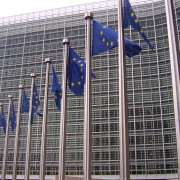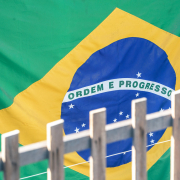The rise of the dollar against the real during the year 2020 will affect the market of phytosanitary products. Sindiveg, the National Union of the Industry of Phytosanitary Products projects a fall of 11.8% in the income in dollars this year, to US $ 11,994 million.
In 2019, the industry generated 13,603 billion dollars. In Brazilian currency, the turnover is expected to grow by 7.8% in 2020. With the real depreciating against the dollar, the income of the companies in real ends up becoming a lower amount in dollars than if the US dollar was less valued. In addition, most of the industry’s costs are in foreign currency, due to the importation of raw materials.
“Until October, the exchange loss was 22% for the sector. It has not yet been possible to fully pass on the cost increase (to buyers),” said Julio Borges Garcia, president of Sindiveg. In 2019, the value of the pesticide market in Brazil was higher than in 2018, both in reais (15.2%) and in dollars (1.7%).
Sindiveg also reported that the area treated with phytosanitary products in 2020 is expected to increase by approximately 6.5% compared to 2019, reaching 1,664 million hectares. The calculation considers the area that received agrochemicals multiplied by the amount of products used and the amount of applications of each product in the same crop. In 2019, the treated area reached 1,562 million hectares. The progress in 2020 is similar to that observed in 2019, with 6.8%.
Garcia explains that this year’s growth has been the result of two main factors: expansion of the planted area in the country and increased pressure from sucking insects (such as bugs, leaf hoppers and corn leaf hoppers), diseases (Asian rust and target stain on soybeans and cotton) and resistant weeds. “The high incidence demands a reinforcement in the attention with the management and control of these plagues,” said the executive.
Garcia stressed that Sindiveg and associated companies have been strengthening actions to disseminate good practices in the application of agrochemicals in the field, to ensure that the instructions for use and regulatory agencies are followed.
The treated area grows 7% until September of this year, but the income in dollars decreases 7.8%.
The area treated with phytosanitary products in the country between January and September 202o increased by approximately 7.1% with respect to the same period last year, reaching a total of 904.1 million hectares. In November 2019, there were 844.5 million hectares. Soybean and corn crops, as in 2019, had a greater weight in the result, representing 34% and 24%, respectively, of the area that received agrochemicals. Income from product sales, on the other hand, fell 7.8% in the year to September, reaching R$ 7,128 billion (US $ 1,322 billion), according to data published by the National Union of the Industry of Phytosanitary Products (Sindiveg).
The appreciation of the dollar against the real interfered in the financial result, according to the entity, since most of the industry’s costs are linked to the import of raw materials, which ended up becoming more expensive in the real. “The strong and accelerated devaluation of the real (against the dollar) did not allow the total transfer of the increase in these costs this year,” said the president of Sindiveg, Julio Borges Garcia, in a note.
The data requested by Sindiveg from the consulting firm Spark Intelligence Strategy shows that the income of the companies in the sector fell even more significantly in the third quarter of 2020, by 18%, reaching R$ 1,390 billion (US $ 257.8 million). Soybeans (29%), sugarcane (18%), fruits and vegetables (12%), grasses (9%) and corn (7%) were the crops with the largest share of financial performance.
Herbicides were the most important in the sector’s sales in the third quarter, representing 51% of the business in dollars, due to the need to combat weeds during the sowing preparation period, explained Sindiveg. In second place were insecticides (with 18% of income), fungicides (15%) and seed treatment (10%). When observed from January to September, the share of each product category changes slightly compared to the third quarter. Considering the area treated with pesticides, insecticides were applied in 27% of the total, followed by herbicides (24%), fungicides (17%), seed treatment (8%) and other products (23%).
Even so, in the third quarter, the area treated increased by 5%, to 212.2 million hectares, 10 million more than in the corresponding interval of 2019. Soybean crops accounted for most of the area that received some type of agrochemical, 39%, followed by pasture (19%), wheat (9%), and corn (8%).
From January to September, Mato Grosso was the state with the greatest relevance for sales in dollars, 27% of the total. São Paulo is in second place, with 14% of the total, followed by the region of Matopiba (which covers part of Maranhão, Tocantins, Piauí and Bahia), with 11%, Paraná (10%), Rio Grande do Sul and Santa Catarina (10%), Goiás (8%), Minas Gerais (8%) and Mato Grosso do Sul (7%). Even in the accumulated result of the year, after soybean and corn, the crops with the highest participation in the treated area were cotton (15%), sugar cane (6%), grasses (5%), beans (4%) and fruits and vegetables (3%).
During the 2020-2021 harvest, Sindiveg called attention to the expected increase in the area planted with soybeans, corn and cotton and the main pests and diseases that these crops must attack. In the case of soybeans, the study commissioned by the organization forecasts a 3.4% growth in the cultivated area, as well as a greater use of technologies to combat Asian rust, bugs, nematodes, mites and other phytosanitary problems.
For the second corn harvest, the forecast is a 4% increase in the area planted with respect to the last harvest, with greater demand for products that combat leaf suckers and spots and for seed treatment.
On the other hand, for the next cotton harvest, a 3% decrease in the cultivated areas is expected, but with a greater need for products to protect and control the cotton weevil pest. This pest is considered the most important and most harmful pest in Latin America, mainly in Brazil, Argentina, Colombia and Paraguay. This is due in part to its enormous potential for destruction which arises from the high reproductive capacity and the many generations that occur in an agricultural cycle.



